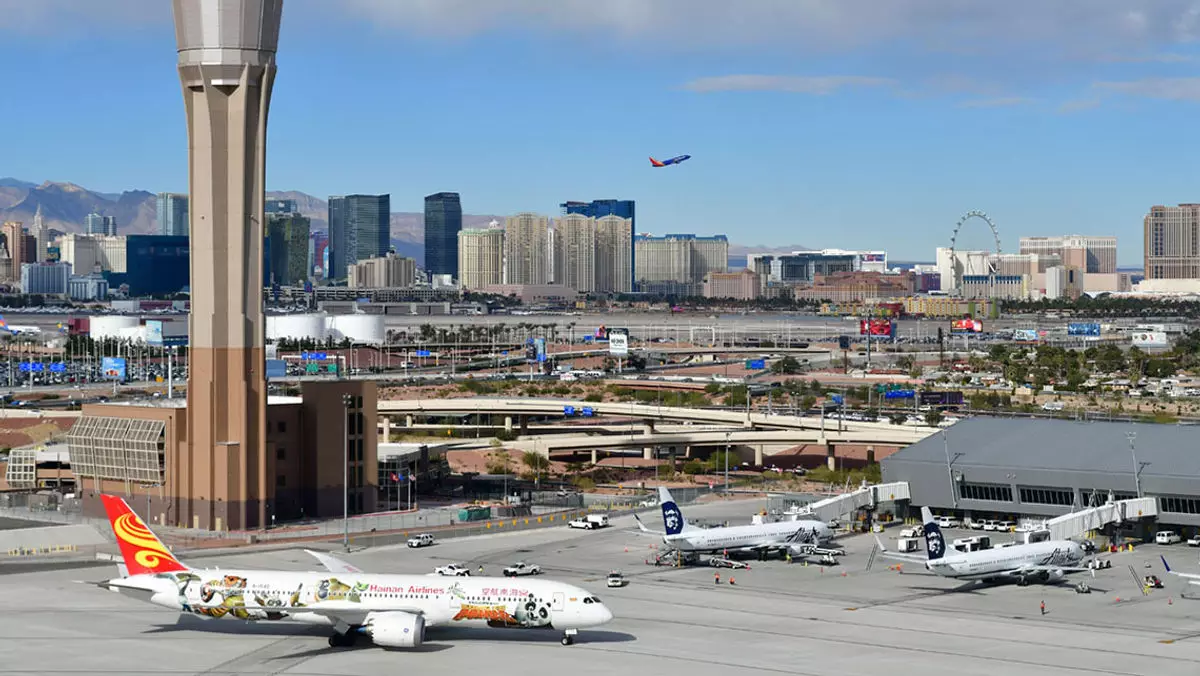The impending retirement of Rosemary Vassiliadis marks the end of an era for Clark County’s aviation system, yet it also opens the door to fresh leadership and innovative strategies. Vassiliadis’s three-decade dedication—culminating in her role as the system’s first female director—has cemented her legacy as a pioneer and a stabilizing force. Her departure might initially seem like a setback; however, it offers an opportunity to reevaluate and accelerate the region’s ambitious aviation improvements.
The selection of a new director of aviation will be pivotal. This individual must not only uphold Vassiliadis’s achievements but also push the boundaries further by embracing cutting-edge technologies, expanding infrastructure, and fostering sustainable growth. Their leadership will determine how effectively the region capitalizes on Las Vegas’s reputation as a global hub for tourism and conventions, especially amid fluctuating travel trends and emerging challenges like environmental concerns and security threats.
Enhancing the Passenger Experience and Airport Capacity
Reid Airport’s remarkable rise to becoming the fifth busiest globally in aircraft movements reflects the resilience of Southern Nevada’s travel industry. However, to maintain and enhance this momentum, substantial investments are necessary. The plan to add 26 new gates to Terminal 1 exemplifies efforts to optimize passenger flow and reduce congestion. Nevertheless, questions remain about the timeline and scope of these upgrades, which are critical to meeting growing demand without sacrificing efficiency or comfort.
Moreover, modernizing the terminal’s outdated satellite gate layout is essential for elevating the passenger journey. A more streamlined pier design could significantly cut wait times and improve operational capacity, ensuring the airport can handle future surges in traffic driven by population growth and economic expansion. The success of these expansions hinges on strategic planning and timely implementation, emphasizing the importance of visionary leadership post-retirement.
Building the Future with a Southern Reliever Airport
The proposed southern reliever airport project is a bold step toward decentralizing air traffic management and easing congestion at Reid. Set to open around 2037, this facility aims to serve as a secondary hub, offering relief and expanded capacity. Yet, its success depends heavily on meticulous planning, community engagement, and sustainable practices.
While critics might argue that a new airport could strain local ecosystems or lead to sprawl, its benefits cannot be ignored. It provides an essential cushion for future growth, resilience against disruptions, and enhanced connectivity for Southern Nevada’s residents and visitors. The project underscores a proactive approach: rather than reacting to congestion and delays, authorities are investing in forward-thinking solutions that will define the region’s aviation landscape for decades.
Innovation and Community Impact: A Lasting Legacy
Vassiliadis’s tenure was marked by pioneering initiatives that elevated the airport’s status as an innovator in security and safety. Recognitions like the designation as the nation’s only Innovation Airport attest to her commitment to integrating technology that improves efficiency and security—elements that are increasingly vital in a post-pandemic world.
Security efforts went beyond technology—staff training in victim identification and partnerships with law enforcement highlighted a focus on community safety and social responsibility. These initiatives build trust, foster inclusivity through multilingual signage, and set new standards for how airports can serve as safe, accessible gateways.
As Clark County transitions to new leadership, the challenge will be to preserve these pioneering efforts while expanding upon them. The coming years will be critical in shaping how Southern Nevada’s aviation ecosystem adapts to the digital age, environmental sustainability, and evolving passenger expectations. The groundwork laid by Vassiliadis offers a solid foundation—now, it’s up to the new leadership to push the boundaries further, ensuring that Las Vegas remains a shining beacon for global air travel and innovation.

